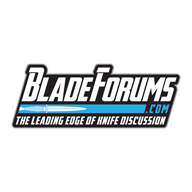Ilikesharpstuff
Basic Member
- Joined
- Jan 19, 2009
- Messages
- 900
I know this can be a controversial topic and stropping is all but beaten to death, but I have some questions for those of you who have or do strop on guided sharpening systems. I understand the theory of stropping, but whether done freehand or on my TsProf Blitz 360 I can never discern a true improvement in sharpness/keenness.
For anyone who is a regular user of strops on a guided system, how do you set your angle? The same as you sharpened at? 1 degree less? .05 degrees less? Is there an optimal differential to shoot for? I have both Jende nanocloth loaded with .5 micron diamond emulsion, and a cowhide strop with no compound. I typically try to strop with as little pressure as possible...not even the weight of the arm/strop, and I usually try to match the angle that I sharpened at exactly. Whether I do 5 strokes per side or 50 with either or both strops, I can't tell much difference in sharpness from straight off my Venev F1500. That said I don't think I'm dulling/rounding the edge, but I don't feel that I'm refining it either. Does that just mean I do a really good job deburring? Would I benefit from setting a lower angle and applying more pressure? Any other thoughts or pointers?
Thanks!
For anyone who is a regular user of strops on a guided system, how do you set your angle? The same as you sharpened at? 1 degree less? .05 degrees less? Is there an optimal differential to shoot for? I have both Jende nanocloth loaded with .5 micron diamond emulsion, and a cowhide strop with no compound. I typically try to strop with as little pressure as possible...not even the weight of the arm/strop, and I usually try to match the angle that I sharpened at exactly. Whether I do 5 strokes per side or 50 with either or both strops, I can't tell much difference in sharpness from straight off my Venev F1500. That said I don't think I'm dulling/rounding the edge, but I don't feel that I'm refining it either. Does that just mean I do a really good job deburring? Would I benefit from setting a lower angle and applying more pressure? Any other thoughts or pointers?
Thanks!

